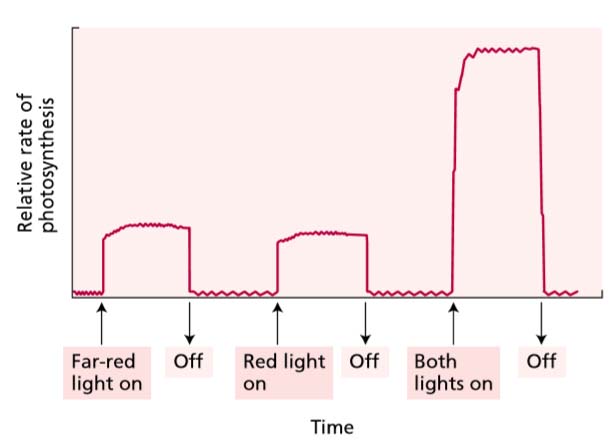By the late 1950s, several experiments were puzzling the scientists who studied photosynthesis. One of these experiments carried out by Emerson, measured the quantum yield of photosynthesis as a function of wavelength and revealed an effect known as the red drop.
If the quantum yield is measured for the wavelengths at which chlorophyll absorbs light, the values found throughout most of the range are fairly constant, indicating that any photon absorbed by chlorophyll or other pigments is as effective as any other photon in driving photosynthesis. However, the yield drops dramatically in the far-red region of chlorophyll absorption (greater than 680 nm).
This drop cannot be caused by a decrease in chlorophyll absorption because the quantum yield measures only light that has actually been absorbed. Thus, light with a wavelength greater than 680 nm is much less efficient than light of shorter wavelengths.
Another puzzling experimental result was the enhancement effect, also discovered by Emerson. He measured the rate of photosynthesis separately with light of two different wavelengths and then used the two beams simultaneously.
When red and far-red light were given together, the rate of photosynthesis was greater than the sum of the individual rates. This was a startling and surprising observation.
These observations were eventually explained by experiments performed in the 1960s that led to the discovery that two photochemical complexes, now known as photosystems Iand II(PSI and PSII), operate in series to carry out the early energy storage reactions of photosynthesis.
Photosystem I preferentially absorbs far-red light of wavelengths greater than 680 nm; photosystem II preferentially absorbs red light of 680 nm and is driven very poorly by far-red light.
Another difference between the photosystems is that
• Photosystem I produces a strong reductant, capable of reducing NADP+, and a weak oxidant.
• Photosystem II produces a very strong oxidant, capable of oxidizing water, and a weaker reductant than the one produced by photosystem I.
